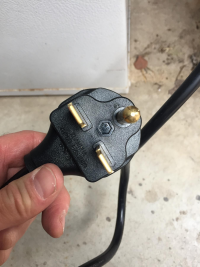fluketamer
Well-Known Member
- Joined
- Dec 1, 2008
- Messages
- 831
- Reaction score
- 975
I regularly see used extension cords or suitable cable to make extension cords on Marketplace and Craigslist for materially less than buying a new cord.
You could put a 6-15 or 6-20 plug on one end and the 6-30 receptacle on the other end and not have to change anything on the wall or the BrewZilla. Basically, it would be an adapter like Bobby showed, but longer.
why do i need 6-30 adaptor wont this 6-15 plug also fit in my recepticle like bobby said.
this is the bz plug. it looks like a 6-15 and a
100 ft. SJTW 12/3 20 Amp 250-Volt NEMA 6-15 Indoor/Outdoor
(thats very expensive)
why would i need the adaptor this looks like it fits the bz and my wall outlet
thanks everyone this is like electricity 101 for me
Attachments
Last edited:







